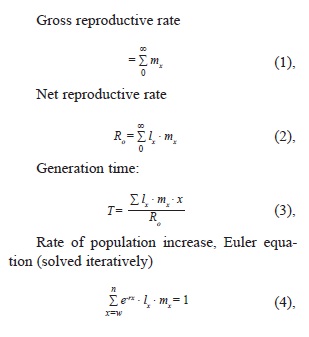Net reproduction rate
The net reproduction rate is a measure used in the demographics. It indicates how many daughters a newborn baby girl on average over the course of his life would have if current age-specific ( and relating to women) birth and death rates for the entire period would be effective until the end of their childbearing age.
So you underestimated the strength of the daughters generation relative to the generation of mothers under the currently prevailing conditions and is therefore a measure of the reproductive capacity of the population. A value below 1 must be assumed ( in the absence of migration) of long-term population decline, unless counteract rising fertility and / or falling death rates; conversely, at a value above 1 by an increase in population.
The rate of growth or the decline can be associated with the net reproduction rate is generally not possible to quantify, because it also the age of the mothers at birth and life expectancy beyond the childbearing age plays a significant role.
The net reproduction rate is determined by the age-specific fertility rates are the proportion of girls among births and the percentage of women who reached this age class multiplied and then summed and divided by 1,000.
Gross reproduction rate
The gross reproduction rate differs from the net reproduction rate by the fact that mortality is not taken into account, is thus assumed that every girl survived to the end of the childbearing years. It can be useful as an upper bound when about expected that a high infant mortality radically back in the near future. However, then the assumption of constant fertility rates will not be very realistic in general.
' Mothers rate '
The German Democratic Republic ran a birth rate policy. Thus, women should be encouraged in child-bearing age or couples to have a child or children
- Despite the difficulties in the GDR economy of scarcity and
- Although it was expected of mothers that they were working.
(see also Women's and Family Policy of the GDR, women's work ). The success of this policy was partly measured by the then so-called ' mothers rate '. It was partly about 90%.









